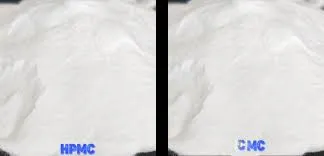
Nov . 21, 2024 01:59 Back to list
hydroxypropyl methyl cellulose side effects
Understanding the Side Effects of Hydroxypropyl Methylcellulose
Hydroxypropyl methylcellulose (HPMC) is a widely used cellulose derivative, known for its versatility in various industries, especially in pharmaceuticals, food, and cosmetics. As an excipient in medication formulations, a thickening agent in food products, and a film-forming agent in skin and hair care products, HPMC serves myriad functions. Despite its broad usage, it is essential to understand the potential side effects associated with its consumption or application.
Background of Hydroxypropyl Methylcellulose
HPMC is derived from cellulose, a natural polymer found in plant cell walls. By modifying the cellulose structure, HPMC is created to possess unique properties such as water solubility, gel-forming ability, and film-forming capabilities. As a result, it is commonly employed as a binder in tablets, a stabilizer in emulsions, and a coating agent that enhances the release profile of drugs.
Potential Side Effects of HPMC
1. Gastrointestinal Effects When ingested, HPMC is generally recognized as safe; however, some individuals may experience gastrointestinal discomfort. This can include symptoms such as gas, bloating, constipation, or diarrhea. The laxative properties of HPMC might cause diarrhea in sensitive individuals, especially when consumed in larger quantities.
2. Allergic Reactions Although rare, some individuals may develop an allergic reaction to HPMC. Symptoms can include itching, rash, swelling, and in severe cases, difficulty breathing. If someone experiences these symptoms after using a product containing HPMC, immediate medical attention is crucial.
3. Interactions with Medications HPMC may interfere with the absorption of certain medications. Its thickening properties can create a gel-like barrier in the gastrointestinal tract, potentially slowing down the absorption of drugs. It is advisable for individuals to consult healthcare providers when taking medications alongside HPMC-containing products, particularly for critical medications that require precise dosing.
hydroxypropyl methyl cellulose side effects

4. Inhalation Risks Inhalation of HPMC powder used in industrial applications may pose risks to respiratory health. Chronic inhalation can lead to respiratory irritation or other pulmonary issues. Workers handling HPMC should take necessary precautions, such as wearing masks and ensuring proper ventilation, to minimize exposure.
5. Skin Irritation In cosmetic formulations, while HPMC is generally considered safe for topical use, some individuals may experience skin irritation or allergic reactions upon application. Typical reactions could include redness, itching, or a burning sensation. Conducting a patch test before full application can help mitigate this risk.
Safety Considerations
HPMC is classified as a Generally Recognized as Safe (GRAS) substance by the U.S. Food and Drug Administration (FDA). Despite its safety profile, individuals who have known sensitivities to cellulose products should exercise caution. Those with certain health conditions, such as gastrointestinal disorders, may want to consult their doctor before introducing HPMC into their diets or topical routines.
In pharmaceuticals, the formulation process usually ensures that HPMC is optimally combined with other ingredients to minimize adverse effects. It is essential for consumers to follow dosing recommendations provided on product labels to reduce the risk of side effects.
Conclusion
Hydroxypropyl methylcellulose plays an integral role across various sectors, providing essential functions that enhance product quality and performance. While it is considered safe for the majority of the population, awareness of potential side effects is crucial, particularly for individuals with sensitivities, those on specific medications, or those working in environments where HPMC dust is present.
For anyone experiencing adverse reactions after using HPMC-containing products, seeking advice from a healthcare professional is recommended. Overall, understanding the benefits and potential side effects of HPMC ensures informed choices regarding its use in daily life, whether through dietary intake, medication, or personal care products.
-
Versatile Hpmc Uses in Different Industries
NewsJun.19,2025
-
Redispersible Powder's Role in Enhancing Durability of Construction Products
NewsJun.19,2025
-
Hydroxyethyl Cellulose Applications Driving Green Industrial Processes
NewsJun.19,2025
-
Exploring Different Redispersible Polymer Powder
NewsJun.19,2025
-
Choosing the Right Mortar Bonding Agent
NewsJun.19,2025
-
Applications and Significance of China Hpmc in Modern Industries
NewsJun.19,2025







